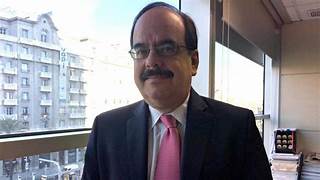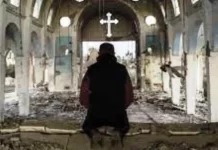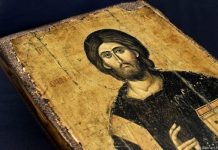لعبة الإدراك في سوريا
السفير ألبرتو م. فرنانديز /موقع ميمري/16 كانون الثاني/2025
(ترجمة من الإنكليزية بواسطة موقع ميكروسوفت)
The Perception Game In Syria
Amb. Alberto M. Fernandez/MEMRI/January 16/2025
The Syrian Civil War (2011-2024) was the first great social media war. Twitter, which had only begun in 2006 played a major role in the dissemination of both facts and propaganda. The Syrian Revolution – the anti-Assad side – pioneered social media strategies that were copied by others, including Jihadists like the Islamic State. It was in Syria that the ISIS propaganda juggernaut reached its full flowering.[1] ISIS’s rival the Nusra Front, today called Hay’at Tahrir Al-Sham (HTS) named its own propaganda arm, Al-Manara Al-Bayda – the White Minaret, referring to a prominent landmark at the Umayyad Mosque in Damascus associated with Islamic eschatology. The anti-Assad Syrian Revolution mediascape ranged from liberal, secularist, and nationalist to Islamist and Jihadist. Although it suffered an eclipse when it looked like Assad was gaining ground (after the fall of Eastern Aleppo in 2016), it never disappeared.[2]
The pro-Assad media landscape also evolved.[3] At first, it was just the Damascus regime but over time outlets like the Assad “Syrian Electronic Army” were joined by propagandists from Iran, Russia, and the entire “Axis of Resistance” militia and regime milieu in the region. This effort was joined by likeminded publicists and activists from the Western far-left and far-right, both of whom favored Russia and Iran, and by extension, Assad, as nodes of resistance to Western liberal hegemony. This mediascape was dominant over the other because in recent years it seemed that Assad had won the war over his adversaries.[4] This turned out to be a false impression overturned when the HTS-led Islamist rebels broke out from Idlib in late November 2024 and conquered most of the country in less than two weeks. Assad fell but the Assad propaganda network is largely intact, as is the Syrian Revolution network that opposes it.
Syria today is (mostly) at peace, except for the Kurdish Northeast. Syrian youth are for the first time in over a decade free from brutal conscription, a reality that led many Syrian families to send their sons into exile. Thanks to generous offers of help from Turkey and some of the Arab Gulf states, the dire situation in Syria with regard to both electricity and food seem to be about to improve. Political prisoners were liberated and the horrible Assad regime torture and drug-trafficking empires exposed. Syrians today are speaking freely, criticizing the ruling Islamists, and demonstrating freely. Christmas and New Year’s Eve were celebrated joyfully and openly to large audiences, especially in the big cities.
Syria today is ruled by radical Islamists with a grim track record. They have not only committed all sorts of abuses and war crimes, many of them continue to make all sorts of bloodcurdling promises to this day. Many of the threats have a clear sectarian nature and the country’s new rulers clearly favor the Sunni Muslim Arab majority. There have been documented cases of violence against minorities, especially Alawites. There have been summary executions in the public square, gunbattles in the street, and generalized insecurity and criminality in many areas, especially the countryside. There are widespread fears about the future, including of extremist rule.
Both of the preceding paragraphs are completely true. The first was completely positive. The second was completely negative. Syria’s reality is that both these realities exist side by side, the reason that many Syrians today are both very hopeful and deeply concerned about the future. In propaganda world, of course, partisans of the new order in Syria will focus on the positive while the partisans of the fallen regime will dwell painting the direst image possible of the reality in Syria. Both sides have plenty of material to work with.
The old propaganda battle, the struggle to manage perceptions and expectations, has taken on a few new wrinkles. The old antagonists have been joined by new players – Arab regimes and their supporters worried about the success of political Islam in Damascus, pro-Kurdish activists who support the Kurdish dominated SDF in Northeast Syria have joined the fight on the anti-HTS side. Many Islamists worldwide have also been galvanized by the Sunni Islamist-led victory in Syria, a victory that was backed by both Turkey and Qatar, who have their own extensive propaganda networks. They all seek to present the new regime in the best possible light.
Not surprisingly, the status of Syria’s minorities – this is a country rich in ethnic and religious minorities – has become a bone of contention, a tool with which to hammer the new regime as it was used to excuse the old one. This, of course, happened under Assad where he was deliberately portrayed, in an exaggerated fashion, as the great protector of Syrian minorities, especially of Christians. The issue of minorities would continue to be an important one in the first weeks of the new Syria. On Christmas Day 2024, the world’s most prominent Jihadist ideologue, the Jordanian Abu Muhammad Al-Maqdisi, criticized Syria’s new rulers for not cracking down on the Christian festival.
Jihadist Al-Maqdisi complains about HTS tolerance of Christmas and Crosses
While Jihadists have criticized the regime as being too tolerant, other campaigns have raised largely false charges about Christian persecution. What turned out to be a local conflict over land and confiscated property in the Christian town of Maaloula was falsely portrayed as an anti-Christian pogrom. The same was true of wild – either completely false or exaggerated – tales about the closing of churches or removal of Christmas trees. There is also the lunatic fringe of the social media space that paints the triumph of the HTS led by Abu Muhammad Al-Joulani in Syria as a Zionist/American plot. In this antisemitic fever dream, Syria’s new rulers are not so much puppets of Turkey and Qatar but puppets of the Jews. This screen capture from Twitter by a pro-Palestine, anti-war, anti-capitalist tankie called @YoungChris27040 is a typical example of this toxic online sub-culture.
While outside propagandists battle over the status of Christians and anything else in Syria today – how hopeful or how serious the situation is – some surprising voices inside the country have joined the fray. Many Christian clergy have been measured and even hopeful in their public statements about the new status quo inside Syria.[5] Some have not.
A prominent example of the naysayers has been the Greek Orthodox Patriarch of Antioch and All the East John X Yaziji (whose Patriarchate is in Damascus). When HTS leader Ahmed Al-Shar’a met with Christian leaders in Damascus in late December, the patriarch was absent, relying on an old tradition that Syria’s new leader should instead call on the Patriarch in person at his patriarchate in Damascus’s old city. On January 3, 2025, the Patriarch met with the visiting French foreign minister. Keen observers noted that the church leader had not used Syria’s pre-Assad national flag, contrasting it with a photo from 2023 where Assad’s photo and the Baathist flag are both prominent.
There is some history here. Of Syria’s high churchmen, there is probably none that were closer to the Assad regime than the Greek Orthodox patriarch of Antioch.[6] The reasons are not so much personal as historic. Of the four historic eastern orthodox patriarchates – Jerusalem, Antioch, Alexandria, and Constantinople – Antioch is the only one whose patriarch has been chosen among Arab, as opposed to Greek, Orthodox clergy, a revolution in church politics engineered over a century ago with the help of Tsarist Russia.[7] The Antioch Patriarchate could even be called the Church of Arabism, the body who produced such errant Orthodox children as Michel Aflaq (co-founder of the Ba’ath Party), Antun Saadeh (founder of the Syrian Social Nationalist Party), and prominent Arab Nationalist Constantine Zurayk.
Not only has John X been seen as openly “unenthusiastic,” to put it mildly, about the new order in Syria but he has been aggressive in calling for rights and guarantees from the new government with a boldness that he never showed once under Assad. This has led to criticism from some of his own flock on January 7, under the title of a group calling themselves the “Antiochian Movement for Change,” that accused the Patriarch of being a tool of the Assad regime and its intelligence apparatus and calling for his resignation. The critics accused John X of “transforming the church from a spiritual beacon into an instrument defending an oppressive regime, and making it a political cover for the regime rather than a refuge for victims.”[8] Defenders of the Patriarch in turned criticized the nascent Antiochian Movement, claiming that it was both unrepresentative and a likely a tool of Syria’s new Islamist rulers. They too rallied on social media to support him.[9]
But questions of media manipulation and reinvention were not limited to the Greek Orthodox Patriarch. Others noted the resurfacing of “Assad’s nun,” Mother Agnes Mariam Al-Salib, a Lebanese Catholic nun who had lived in Syria for 30 years and openly and repeatedly supported the Assad regime, including in high profile media junkets in the West.[10] The sister now appeared on several media outlets, including BBC Arabic on January 2025, criticizing the new Syrian authorities’ supposed bad treatment of minorities.[11] Some Syrian observers called for her expulsion, noting her lengthy track record of covering for Assad regime massacres and recycling regime propaganda, which was in turn then recycled by Russia, Iran, and their ideological allies in the West.[12]
The propaganda struggle in Syria seems doomed to continue. While fact-checking sites like @VeSyria are doing solid work in both Arabic and English to expose the lies, the sheer flood of spurious or completely false content is hard to combat.[13] Even if the regime was spotless in its behavior – and it is not – its clear ideological orientation, even with the best of intentions, will attract controversy both in the East and in the West. Many are deeply invested in seeing the fall or the survival of Syria’s interim regime. The fate of Syria’s minorities, especially its relatively small remaining population of Christians, will continue to be a convenient, high-profile type of shorthand to demonize the regime or to excuse it.
*Alberto M. Fernandez is Vice President of MEMRI.
[1] Brookings.edu/articles/here-to-stay-and-growing-combating-isis-propaganda-networks, October 21, 2015.
[2] Newarab.com/analysis/fighting-truth-against-syrias-disinformation-regime, October 7, 2022.
[3] Deeply.thenewhumanitarian.org/syria/articles/2016/10/03/analysis-why-assads-propaganda-isnt-as-crazy-as-it-seems, October 3, 2016.
[4] Manaramagazine.org/2022/11/regime-legitimation-in-syria-propaganda, November 4, 2022.
[5] Catholicnewsagency.com/news/261511/syrias-christians-voice-relief-seek-further-security-guarantees-after-political-shift, January 13, 2025.
[6] Alaraby.co.uk/opinion/%D8%B1%D8%B3%D8%A7%D9%84%D8%A9-%D9%85%D9%81%D8%AA%D9%88%D8%AD%D8%A9-%D8%A5%D9%84%D9%89-%D8%A7%D9%84%D8%A8%D8%B7%D8%B1%D9%8A%D8%B1%D9%83-%D9%8A%D9%88%D8%AD%D9%86%D8%A7-%D8%A7%D9%84%D8%B9%D8%A7%D8%B4%D8%B1-%D9%8A%D8%A7%D8%B2%D8%AC%D9%8A, August 3, 2023.
[7] Orthodoxhistory.org/2021/06/30/the-end-of-the-greek-captivity-of-antioch, June 30, 2021.
[8] Facebook.com/story.php?story_fbid=925986989639251&id=100066838743867&rdid=6wm18YpJlOKxXX2m
[9] Tiktok.com/@elie1997s/video/7458310808724868353, January 10, 2025.
[10] Syrianmemory.org/archive/figures/5fe1f65586773200011acc30, accessed January 14, 2025.
[11] Youtube.com/watch?v=0C94e194oBw&t=83s, January 5, 2025.
[12] X.com/MoMegdadi/status/1876705624609751525, January 7, 2025.
[13] X.com/VeSyria, accessed January 14, 2025.
https://www.memri.org/reports/perception-game-syria?fbclid=IwY2xjawH2I0ZleHRuA2FlbQIxMQABHRxDSnKDpRXurPoXtMd4A3jpx0q45zKNVpE8VM0J6w-oOvhnGsAz-bciFQ_aem_PcVi9HyxHcSDjRviWrYo1g
لعبة الإدراك في سوريا
السفير ألبرتو م. فرنانديز /موقع ميمري/16 كانون الثاني/2025
(ترجمة من الإنكليزية بواسطة موقع ميكروسوفت)
كانت الحرب الأهلية السورية (2011-2024) أول حرب كبرى على وسائل التواصل الاجتماعي. لعب تويتر ، الذي بدأ فقط في عام 2006 ، دورا رئيسيا في نشر الحقائق والدعاية. كانت الثورة السورية – الجانب المناهض للأسد – رائدة في استراتيجيات وسائل التواصل الاجتماعي التي نسخها آخرون، بما في ذلك الجهاديون مثل تنظيم الدولة الإسلامية. في سوريا وصلت قوة الدعاية الدعائية لداعش إلى ازدهارها الكامل. [1] أطلقت جبهة النصرة، منافسة داعش، التي تسمى اليوم هيئة تحرير الشام، على ذراعها الدعائي اسم المنارة البيضاء – المئذنة البيضاء، في إشارة إلى معلم بارز في الجامع الأموي في دمشق مرتبط بالأخرويات الإسلامية. تراوح المشهد الإعلامي المناهض للثورة السورية المناهضة للأسد من الليبرالي والعلماني والقومي إلى الإسلامي والجهادي. على الرغم من أنها عانت من كسوف عندما بدا أن الأسد يحقق تقدما (بعد سقوط شرق حلب في عام 2016)، إلا أنها لم تختف أبدا. [2]
كما تطور المشهد الإعلامي الموالي للأسد. [3] في البداية، كان نظام دمشق فقط، ولكن مع مرور الوقت انضم إلى وسائل إعلام مثل “الجيش السوري الإلكتروني” للأسد دعاة من إيران وروسيا وميليشيا “محور المقاومة” بأكملها ووسط النظام في المنطقة. وانضم إلى هذا الجهد دعاية ونشطاء متشابهون في التفكير من اليسار الغربي واليمين المتطرف، وكلاهما فضل روسيا وإيران، وبالتالي الأسد، كنقاط مقاومة للهيمنة الليبرالية الغربية. كان هذا المشهد الإعلامي مهيمنا على الآخر لأنه بدا في السنوات الأخيرة أن الأسد قد انتصر في الحرب على خصومه. [4] اتضح أن هذا انطباع خاطئ انقلب عندما انفجر المتمردون الإسلاميون بقيادة هيئة تحرير الشام من إدلب في أواخر تشرين الثاني/نوفمبر 2024 واحتلوا معظم البلاد في أقل من أسبوعين. سقط الأسد لكن شبكة الدعاية للأسد لا تزال سليمة إلى حد كبير، وكذلك شبكة الثورة السورية التي تعارضها.
سوريا اليوم (في الغالب) في سلام ، باستثناء الشمال الشرقي الكردي. يتحرر الشباب السوري لأول مرة منذ أكثر من عقد من الزمان من التجنيد الإجباري الوحشي، وهو الواقع الذي دفع العديد من العائلات السورية إلى إرسال أبنائها إلى المنفى. وبفضل عروض المساعدة السخية من تركيا وبعض دول الخليج العربي، يبدو أن الوضع المزري في سوريا فيما يتعلق بالكهرباء والغذاء على وشك التحسن. تم إطلاق سراح السجناء السياسيين وفضح إمبراطوريات نظام الأسد الرهيبة للتعذيب وتهريب المخدرات. يتحدث السوريون اليوم بحرية، وينتقدون الإسلاميين الحاكمين، ويتظاهرون بحرية. تم الاحتفال بعيد الميلاد وليلة رأس السنة الجديدة بفرح وبصراحة أمام جماهير كبيرة ، خاصة في المدن الكبرى.
سوريا اليوم يحكمها إسلاميون متطرفون لديهم سجل مروع. لم يرتكبوا جميع أنواع الانتهاكات وجرائم الحرب فحسب، بل يواصل الكثير منهم تقديم جميع أنواع الوعود الدموية حتى يومنا هذا. العديد من التهديدات لها طبيعة طائفية واضحة، ومن الواضح أن حكام البلاد الجدد يفضلون الأغلبية العربية السنية. وقد تم توثيق حالات عنف ضد الأقليات، وخاصة العلويين. كانت هناك عمليات إعدام بإجراءات موجزة في الساحة العامة، واشتباكات بالأسلحة النارية في الشوارع، وانعدام الأمن
والإجرام المعممين في العديد من المناطق، وخاصة الريف. هناك مخاوف واسعة النطاق بشأن المستقبل ، بما في ذلك من الحكم المتطرف.
كلتا الفقرتين السابقتين صحيحتان تماما. الأول كان إيجابيا تماما. والثاني كان سلبيا تماما. حقيقة سوريا هي أن هذين الحقيقتين موجودتان جنبا إلى جنب، وهذا السبب في أن العديد من السوريين اليوم يشعرون بالأمل الشديد والقلق العميق بشأن المستقبل. في عالم الدعاية، بالطبع، سيركز أنصار النظام الجديد في سوريا على الإيجابية، بينما سيركز أنصار النظام الساقط في رسم أسوأ صورة ممكنة للواقع في سوريا. كلا الجانبين لديهما الكثير من المواد للعمل معها.
لقد اتخذت المعركة الدعائية القديمة ، النضال من أجل إدارة التصورات والتوقعات ، بعض التجاعيد الجديدة. انضم إلى الخصوم القدامى لاعبون جدد – الأنظمة العربية وأنصارها القلقون من نجاح الإسلام السياسي في دمشق، وانضم النشطاء المؤيدون للأكراد الذين يدعمون قوات سوريا الديمقراطية التي يهيمن عليها الأكراد في شمال شرق سوريا إلى القتال إلى الجانب المناهض لهيئة تحرير الشام. كما تم تحفيز العديد من الإسلاميين في جميع أنحاء العالم من الانتصار الذي قاده الإسلاميون السنة في سوريا ، وهو انتصار دعمته كل من تركيا وقطر ، اللتين لديهما شبكات دعاية واسعة النطاق. ويسعون جميعا إلى تقديم النظام الجديد في أفضل صورة ممكنة.
ليس من المستغرب أن يصبح وضع الأقليات في سوريا – هذا بلد غني بالأقليات العرقية والدينية – موضع خلاف، أداة لضرب النظام الجديد كما كان يستخدم لتبرير النظام القديم. حدث هذا بالطبع في عهد الأسد حيث تم تصويره عمدا، بطريقة مبالغ فيها، على أنه الحامي الأكبر للأقليات السورية، وخاصة المسيحيين. ستظل قضية الأقليات قضية مهمة في الأسابيع الأولى من سوريا الجديدة. في يوم عيد الميلاد 2024، انتقد المنظر الجهادي الأبرز في العالم، الأردني أبو محمد المقدسي، حكام سوريا الجدد لعدم قمع العيد المسيحي.
الجهادي المقدسي يشكو من تسامح هيئة تحرير الشام مع عيد الميلاد والصلبان
في حين انتقد الجهاديون النظام باعتباره متسامحا للغاية ، أثارت حملات أخرى اتهامات كاذبة إلى حد كبير حول اضطهاد المسيحيين. ما تبين أنه نزاع محلي على الأرض والممتلكات المصادرة في بلدة معلولا المسيحية تم تصويره زورا على أنه مذبحة معادية للمسيحية. وينطبق الشيء نفسه على الحكايات الجامحة – سواء كانت كاذبة تماما أو مبالغ فيها – حول إغلاق الكنائس أو إزالة أشجار عيد الميلاد. هناك أيضا الهامش المجنون لفضاء وسائل التواصل الاجتماعي الذي يصور انتصار هيئة تحرير الشام بقيادة أبو محمد الجولاني في سوريا على أنه مؤامرة صهيونية/أمريكية. في حلم الحمى المعادية للسامية هذا، فإن حكام سوريا الجدد ليسوا دمى في يد تركيا وقطر، بل دمى لليهود. يعد لقطة الشاشة هذه من تويتر من قبل دبابة مؤيدة لفلسطين ومناهضة للحرب ومناهضة للرأسمالية تدعى @YoungChris27040 مثالا نموذجيا على هذه الثقافة الفرعية السامة عبر الإنترنت.
بينما يتصارع الدعاة الخارجيون حول وضع المسيحيين وأي شيء آخر في سوريا اليوم – مدى الأمل أو مدى خطورة الوضع – انضمت بعض الأصوات المفاجئة داخل البلاد إلى المعركة. لقد تم قياس العديد من رجال الدين المسيحيين وحتى بالأمل في تصريحاتهم العلنية حول الوضع الراهن الجديد داخل سوريا. [5] البعض لم يفعل ذلك.
ومن الأمثلة البارزة على الرافضين بطريرك الروم الأرثوذكس في أنطاكية وكل الشرق يوحنا العاشر يازجي (الذي تقع بطريركته في دمشق). عندما التقى زعيم هيئة تحرير الشام أحمد الشرع بقادة مسيحيين في دمشق في أواخر كانون الأول/ديسمبر، كان البطريرك غائبا، معتمدا على تقليد قديم مفاده أن الزعيم السوري الجديد يجب أن يدعو البطريرك شخصيا إلى بطريركته في مدينة دمشق القديمة. في 3 يناير 2025 ، التقى البطريرك بوزير الخارجية الفرنسي الزائر. وأشار مراقبون حريصون إلى أن زعيم الكنيسة لم يستخدم العلم الوطني السوري قبل الأسد، مقارنين به بصورة من عام 2023 حيث تبرز صورة الأسد والعلم البعثي.
هناك بعض التاريخ هنا. من بين كبار رجال الكنيسة في سوريا، ربما لا يوجد أحد أقرب إلى نظام الأسد من بطريرك أنطاكية الأرثوذكس اليوناني. [6] الأسباب ليست شخصية بقدر ما هي تاريخية. من بين البطريركيات الأرثوذكسية الشرقية الأربع التاريخية القدس وأنطاكية والإسكندرية والقسطنطينية أنطاكية هي الوحيدة التي تم اختيار بطريركها من بين العرب، على عكس رجال الدين الأرثوذكس اليونانيين، وهي ثورة في السياسة الكنسية تم هندستها منذ أكثر من قرن من الزمان بمساعدة روسيا القيصرية. [7] يمكن حتى تسمية بطريركية أنطاكية بكنيسة العروبة ، وهي الهيئة التي أنتجت أطفالا أرثوذكس ضالين مثل ميشال عفلق (المؤسس المشارك لحزب البعث) ، وأنطون سعادة (مؤسس الحزب السوري القومي الاجتماعي) ، والقومي العربي البارز قسطنطين زريق.
لم ينظر إلى جون العاشر على أنه “غير متحمس” علنا ، بعبارة ملطفة ، بشأن النظام الجديد في سوريا فحسب ، بل كان عدوانيا في المطالبة بالحقوق والضمانات من الحكومة الجديدة بجرأة لم يظهرها أبدا في عهد الأسد. وقد أدى ذلك إلى انتقادات من بعض قطيعه في 7 كانون الثاني/يناير، تحت عنوان مجموعة تطلق على نفسها اسم “الحركة الأنطاكية من أجل التغيير”، اتهمت البطريرك بأنه أداة لنظام الأسد وجهازه الاستخباراتي وتدعو إلى استقالته. اتهم النقاد يوحنا العاشر ب “تحويل الكنيسة من منارة روحية إلى أداة للدفاع عن نظام قمعي ، وجعلها غطاء سياسيا للنظام بدلا من ملجأ للضحايا”. [8] انتقد المدافعون عن البطريرك بدورهم الحركة الأنطاكية الناشئة ، زاعمين أنها غير ممثلة ومن المحتمل أن تكون أداة في يد حكام سوريا الإسلاميين الجدد. لقد احتشدوا أيضا على وسائل التواصل الاجتماعي لدعمه. [9]
لكن مسائل التلاعب الإعلامي وإعادة اختراعه لم تقتصر على بطريرك الروم الأرثوذكس. وأشار آخرون إلى ظهور “راهبة الأسد”، الأم أغنيس مريم الصاليب، وهي راهبة كاثوليكية لبنانية عاشت في سوريا لمدة 30 عاما ودعمت نظام الأسد بشكل علني ومتكرر، بما في ذلك في النشرات الإعلامية البارزة في الغرب. [10] ظهرت الأخت الآن في العديد من وسائل الإعلام ، بما في ذلك بي بي سي العربية في يناير 2025 ، منتقدة معاملة السلطات السورية الجديدة السيئة المفترضة للأقليات. [11] دعا بعض المراقبين السوريين إلى طردها، مشيرين إلى سجلها الحافل في تغطية مذابح نظام الأسد وإعادة تدوير دعاية النظام، التي أعيد تدويرها بعد ذلك روسيا وإيران وحلفاؤهما الأيديولوجيين في الغرب. [12]
يبدو أن النضال الدعائي في سوريا محكوم عليه بالاستمرار. في حين أن مواقع التحقق من الحقائق مثل @VeSyria تقوم بعمل قوي باللغتين العربية والإنجليزية لفضح الأكاذيب، يصعب مكافحة التدفق الهائل للمحتوى الزائف أو الكاذب تماما. [13] حتى لو كان النظام نظيفا في سلوكه – وهو ليس كذلك – فإن توجهه الأيديولوجي الواضح ، حتى مع أفضل النوايا ، سيثير الجدل في كل من الشرق والغرب. يستثمر الكثيرون بعمق في رؤية سقوط أو بقاء النظام السوري المؤقت. سيظل مصير الأقليات في سوريا، وخاصة عدد سكانها الصغير نسبيا من المسيحيين، نوعا مناسبا ورفيع المستوى من الاختصار لشيطنة النظام أو تبريره.
* ألبرتو إم فرنانديز هو نائب رئيس MEMRI.





















